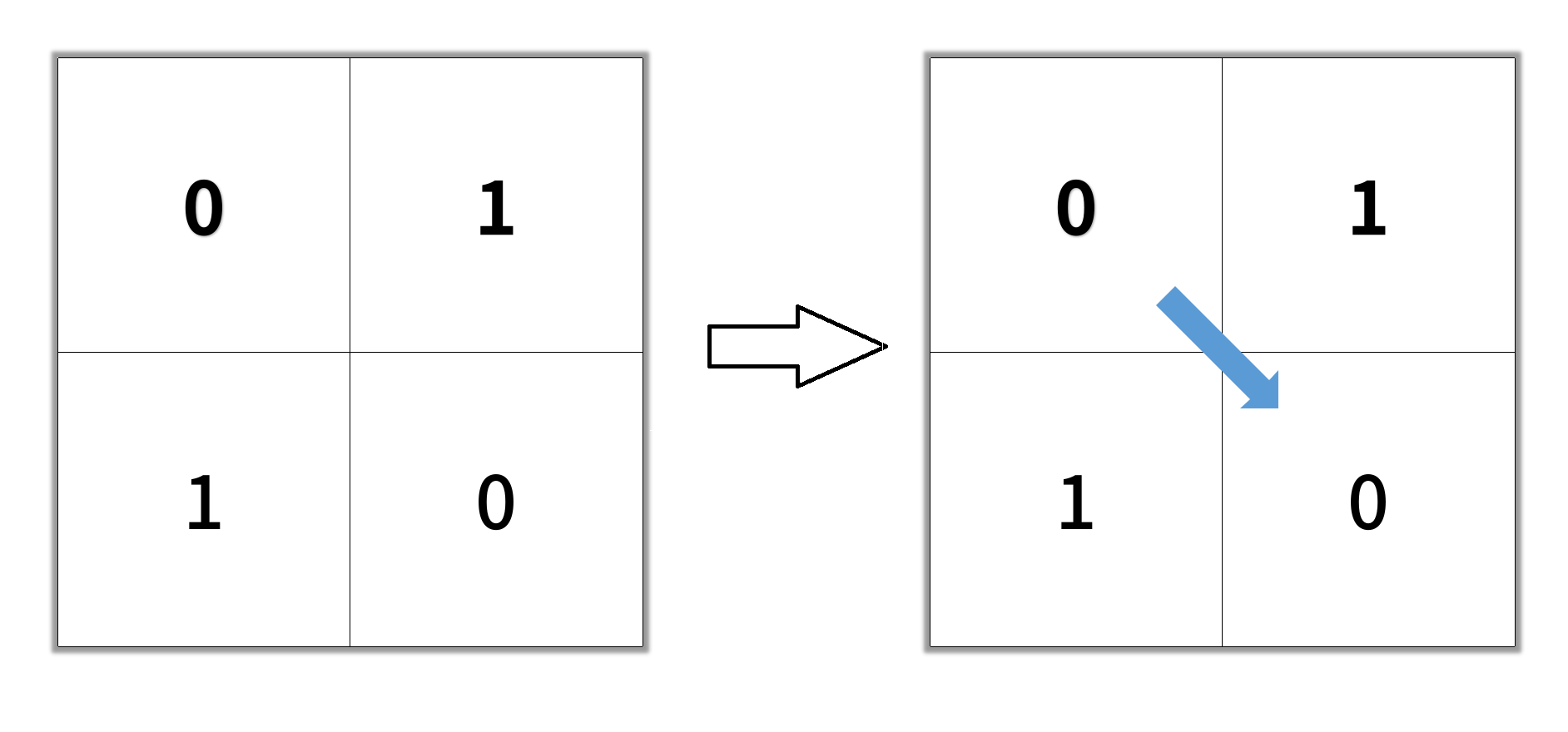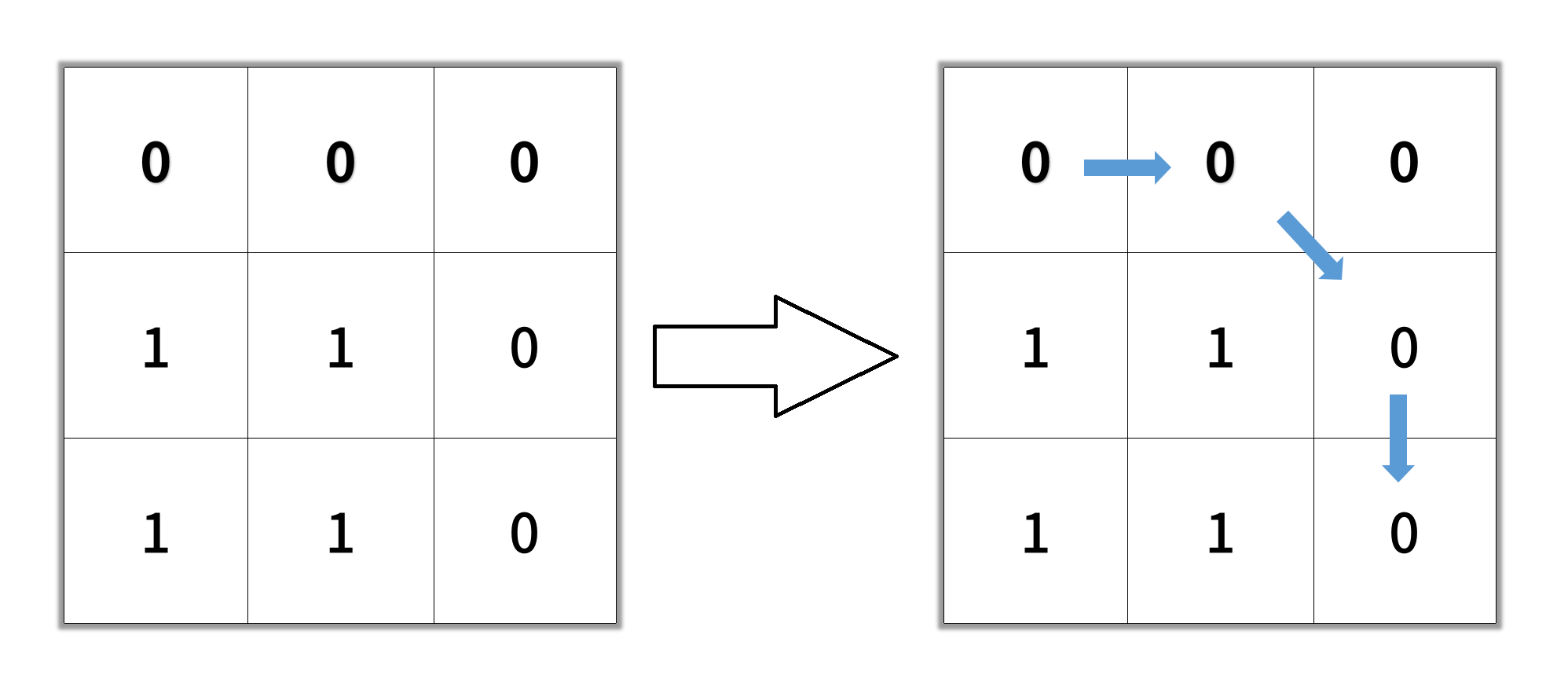Shortest Path in Binary Matrix
description
Given an n x n binary matrix grid, return the length of the shortest clear path in the matrix. If there is no clear path, return -1.
A clear path in a binary matrix is a path from the top-left cell (i.e., (0, 0)) to the bottom-right cell (i.e., (n - 1, n - 1)) such that:
- All the visited cells of the path are
0. - All the adjacent cells of the path are 8-directionally connected (i.e., they are different and they share an edge or a corner).
The length of a clear path is the number of visited cells of this path.
Example 1:

Input: grid = [[0,1],[1,0]] Output: 2
Example 2:

Input: grid = [[0,0,0],[1,1,0],[1,1,0]] Output: 4
Example 3:
Input: grid = [[1,0,0],[1,1,0],[1,1,0]] Output: -1
Constraints:
n == grid.lengthn == grid[i].length1 <= n <= 100grid[i][j] is 0 or 1
submission
// BFS with double queue
impl Solution {
pub fn shortest_path_binary_matrix(mut grid: Vec<Vec<i32>>) -> i32 {
// 8 directions
#[rustfmt::skip]
let dirs = [[0, 1], [1, 1], [1, 0], [1, -1], [0, -1], [-1, -1], [-1, 0], [-1, 1]];
let n = grid.len() as i32;
// double "queue"
let (mut queue, mut swp) = (vec![], vec![]);
let mut steps = 0;
queue.push((0i32, 0i32));
// helper lambda to check range
let inrange = |x: i32, y: i32| x >= 0 && x < n && y >= 0 && y < n;
while !queue.is_empty() {
// keep track of steps
steps += 1;
while let Some((x, y)) = queue.pop() {
// check range and value and mark visited
if !inrange(x, y) || std::mem::replace(&mut grid[x as usize][y as usize], 1) != 0 {
continue;
}
// reach destination, return
if x == n - 1 && y == n - 1 {
return steps;
}
// push adjacent cells to another queue
for [dx, dy] in dirs {
swp.push((x + dx, y + dy));
}
}
// alternate between two queues
std::mem::swap(&mut queue, &mut swp);
}
// unreachable
-1
}
}